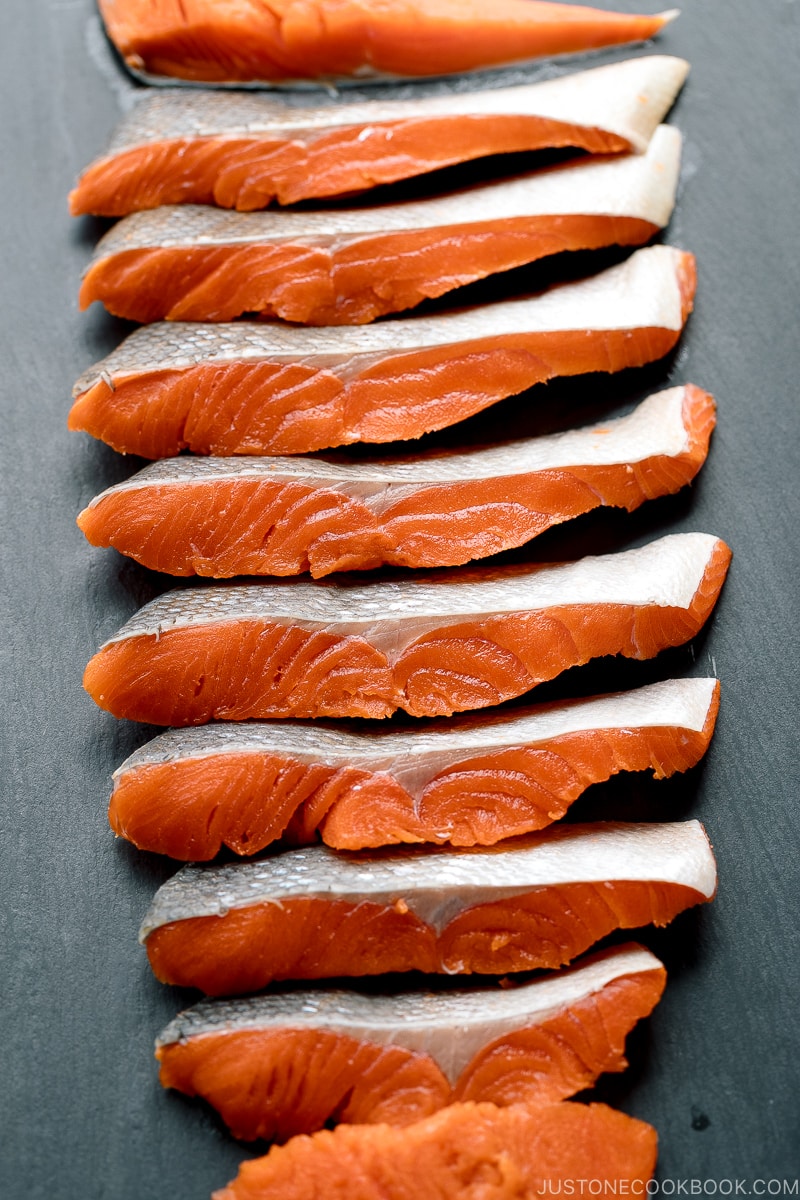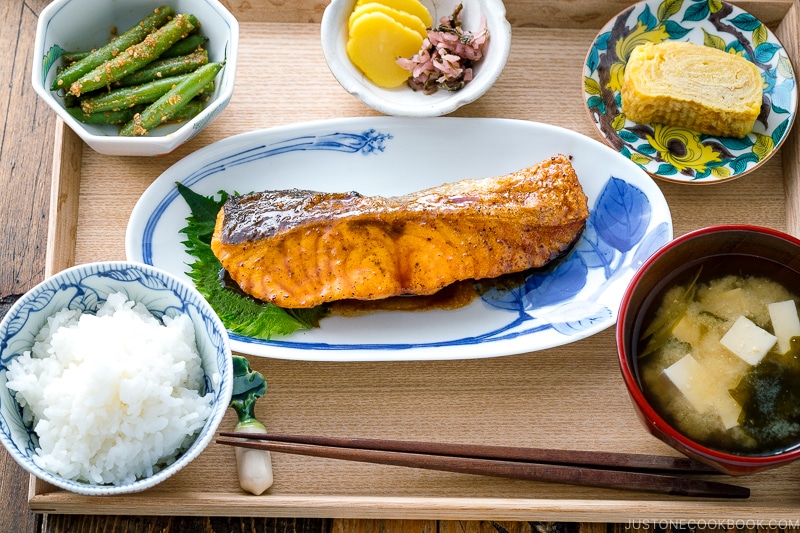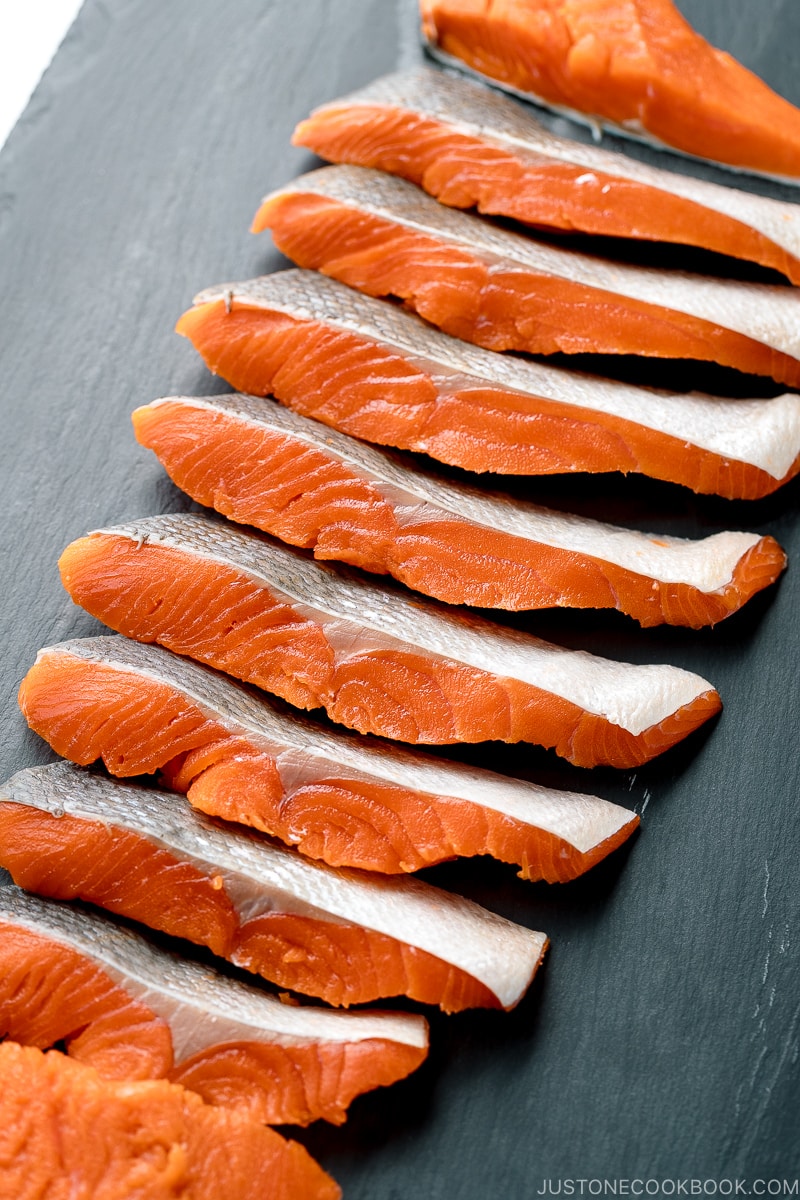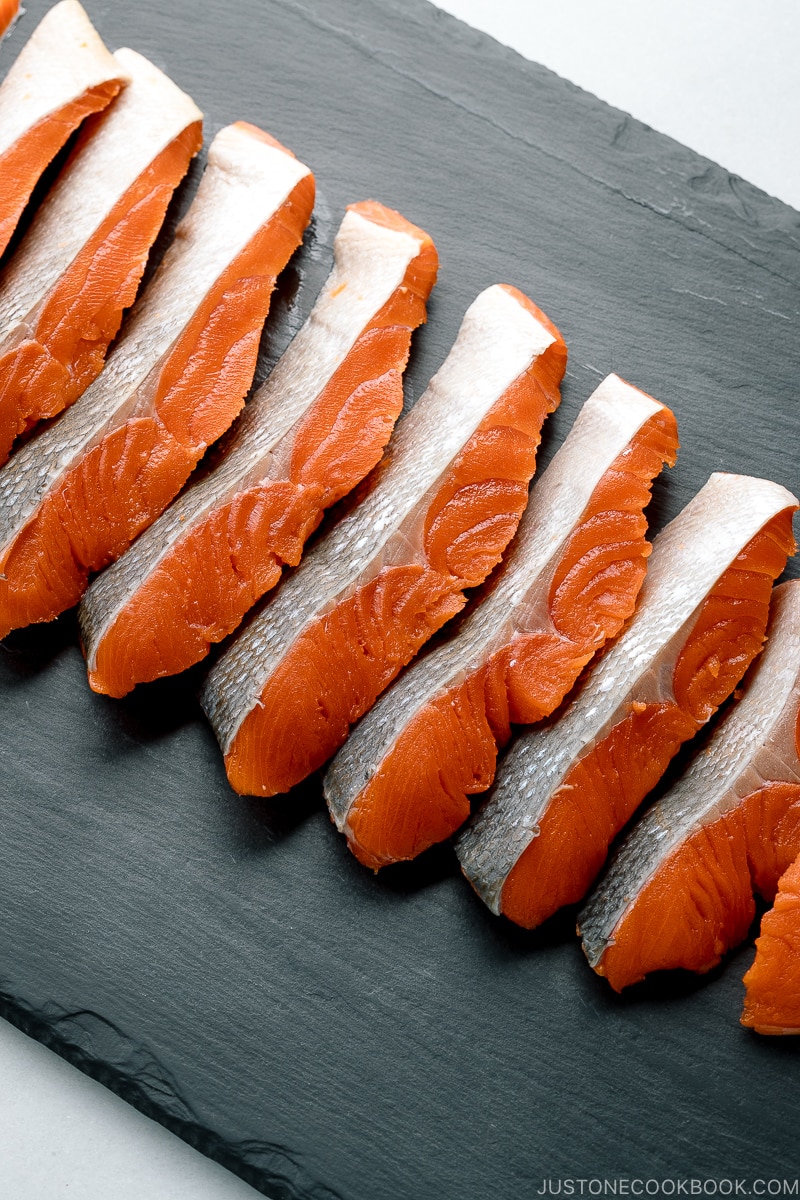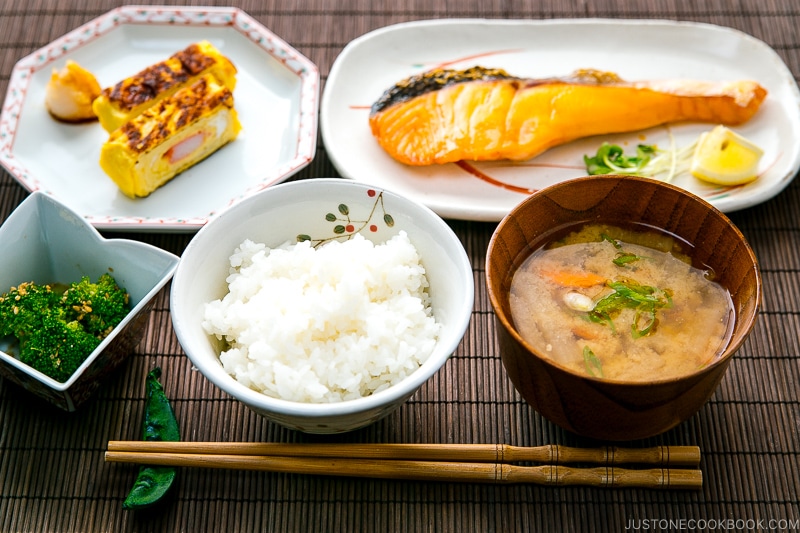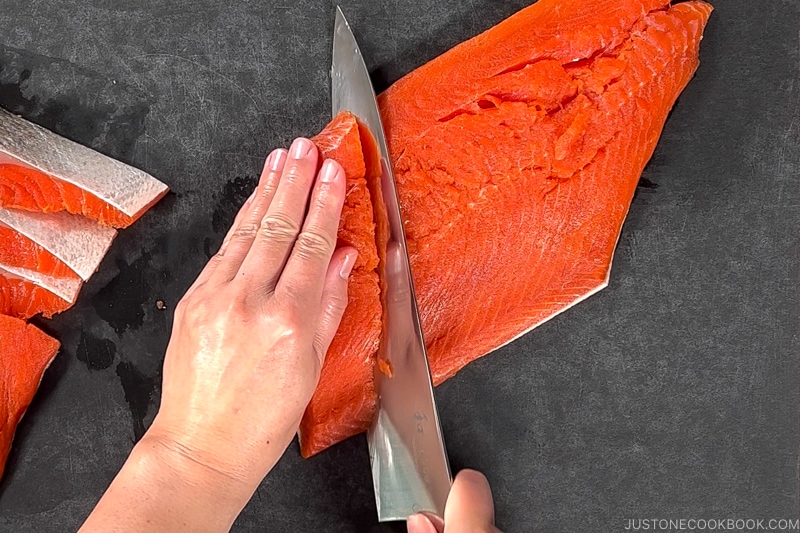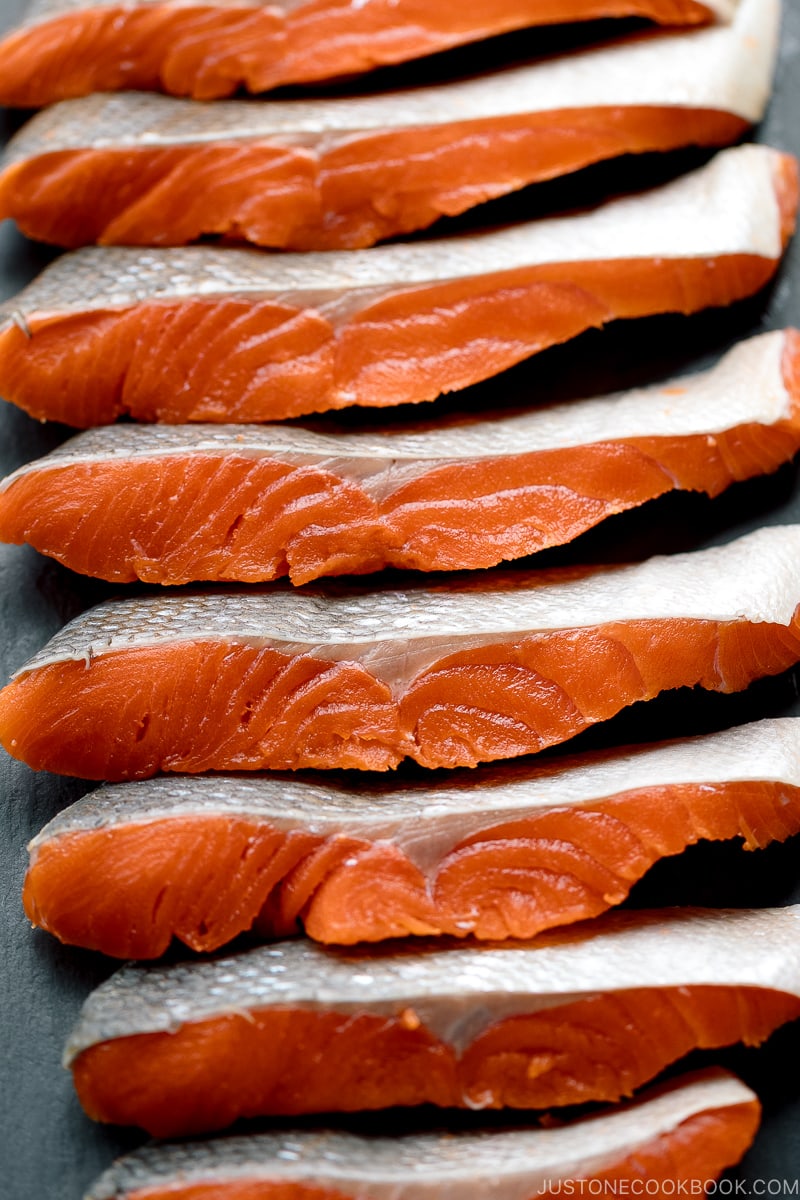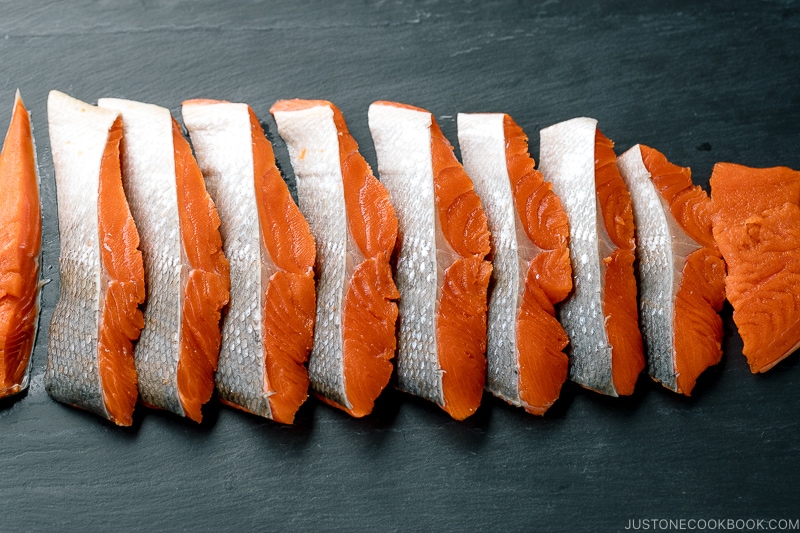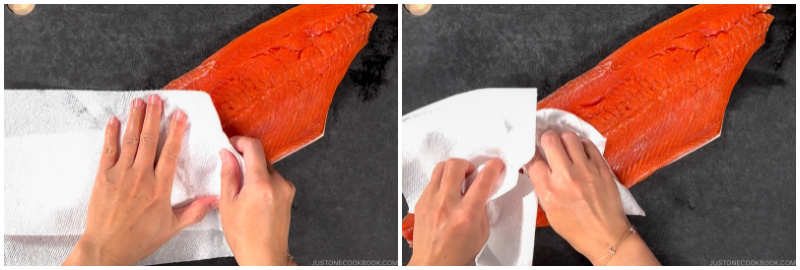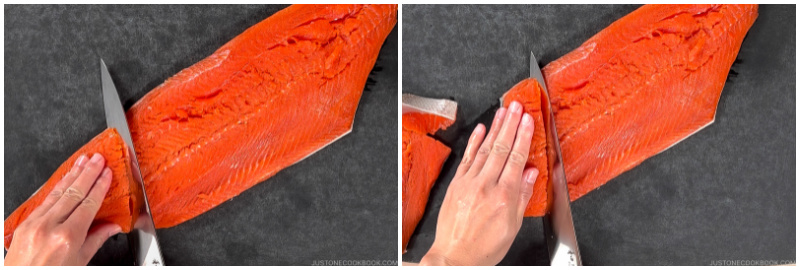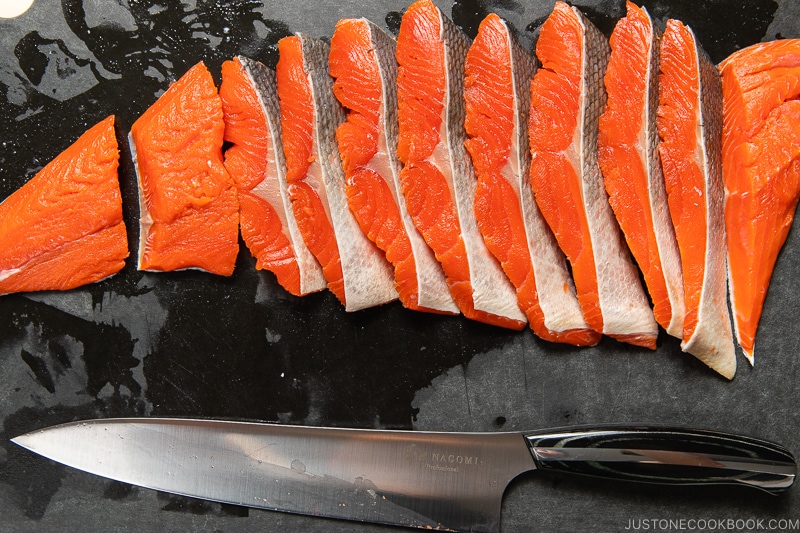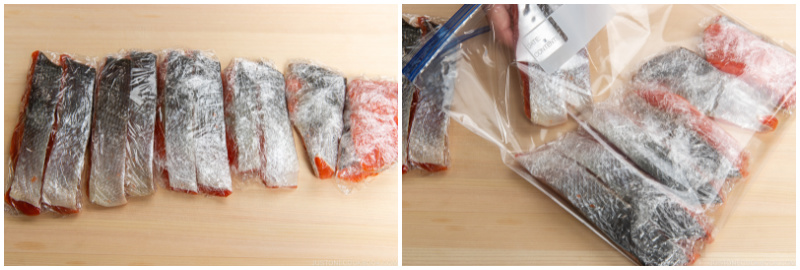Today, let’s learn a new kitchen skill that’s going to be very useful! We will cut a side of salmon fillet into Japanese-style: thin and angled fillets. You might have noticed that Japanese salmon fillets look slightly different from the Western-style fillets. Japanese fillets are always sliced diagonally, showing the skin on top. The portion tends to be smaller too, as it is often intended to be served as a main dish in the Japanese ichiju sansai (一汁三菜) “one soup three dishes” meal. Unless you live near a Japanese grocery store, you might not be able to find this cut of salmon fillets. Nevertheless, you can always buy a side of salmon fillet from regular grocery stores and cut it into Japanese-style on your own. In fact, I found that this option is actually much more economical. Let’s take a look!
Why Cut Salmon Fillet Yourself?
Filleting the fish thinly might look like a lot of work, but it’s actually not! I want to share a few benefits as to why:
You get to prepare and cook salmon recipes with authentic Japanese method! It is SO MUCH cheaper than the pre-cut fillets sold at Japanese grocery stores (huge win!) You can decide how big or small you’d like your fillets to be.
What Kind of Salmon Should You Get
There are several kinds of salmon and each comes in different thicknesses, flavors and textures:
King Salmon Coho Salmon Sockeye Salmon Atlantic Salmon Arctic Char Salmon
You can get any of these salmon fillets. For today’s tutorial, I bought a fillet of wild sockeye salmon (1.3 lb, 600 g) from Costco. For my Salted Salmon (Shiozake) recipe, we will specifically need thinner Japanese-style fillets of Sockeye salmon.
How to Cut Salmon into Fillets
Choose the Left Side Fillet (if possible)
When you shop for a side of salmon, you have to know there are left and right sides of a fillet. We don’t normally get to choose when we buy the pre-cuts fillets at a Japanese grocery store. Since you would be buying a whole fillet for this scenario, I recommend getting the left side fillet of salmon. Why? Typically, when you present the salmon fillet on a plate, the dark side skin is on the left side and light color skin is on the right side (see below). It’s helpful to remember:
The light, silver-colored skin is on the belly side. The belly side has less flesh (the gut has been removed)
Slice the Salmon Diagonally
Place the salmon skin side down with the narrow tail end to your left (the head end is wider). Next, cut off the tail’s narrowest part, which is too small for Japanese-style fillets. Tilt your knife back about 30 degrees and diagonally slice the salmon toward the tail end. By slicing the fillet at an angle, the surface of the flesh is maximized which allows the salmon to cook quicker and evenly at the same time.
How Big Should We Slice?
I decide the portion size based on the look of the salmon fillet and slice the fillet into 1 inch (2.5 cm) thickness. The typical Japanese-style salmon fillets are 60-80 grams (2.1-2.8 ounces), yes, they are much smaller in size than the Western-style fillets.
How to Store Salmon Fillets
I am not a big fan of plastic usage; however, to preserve the salmon and its fresh quality for a longer time, you would need to tightly wrap each fillet in plastic, remove the air, and put it in the bag/container before storing in the freezer. It will last for a month, or maybe a little longer if your freezer keeps the temperature well.
Delicious Japanese Salmon Recipes
With the thin-cut salmon fillets on hand, you can cook up these delicious Japanese salmon recipes anytime:
Miso Salmon Mirin Salmon Teriyaki Salmon Shio Koji Salmon Miso Butter Salmon Salmon in Foil Salmon Flakes Salmon Fried Rice Sanpeijiru (Japanese Salmon Soup) Hokkaido Salmon Hot Pot (Ishikari Nabe)
